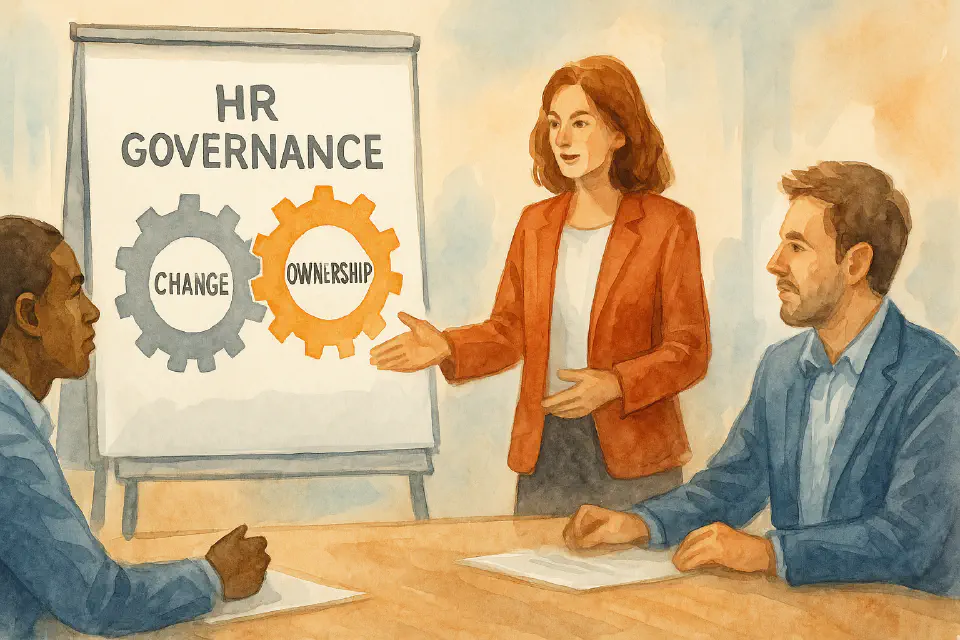
HR Governance and Change Ownership
Transformation without governance is chaos. HR needs structures, roles, and accountabilities to make change happen—deliberately and at scale.
When HR leads or supports transformation, the way it governs the process is just as important as the change content itself. HR governance provides the structure, roles, and accountability that ensure alignment, avoid duplication, and keep change efforts on track.
1. What Is HR Governance in Transformation?
HR governance refers to the decision-making framework and ownership structures used to steer people-related change. It defines:
- Who has the authority to approve changes
- How priorities are decided and resourced
- How risks are managed
- Who is accountable for delivery
Without governance, even good ideas fail from lack of coordination.
2. Establish Clear Roles and Accountability
Governance starts with role clarity. For example:
- CHRO: Strategic owner of people-related change
- HRBP: Translator of change into business units
- CoE leads: Designers of new frameworks and tools
- Project leads: Drivers of implementation
Each role must have defined decision rights, not just responsibilities.
3. Create Change Councils or Steering Groups
Major transformations often benefit from a governance body, such as:
- A Change Council chaired by the CHRO
- A Transformation Steering Committee including HR, IT, Finance
- Business-led groups focused on local adoption
These bodies ensure alignment and fast problem resolution.
4. Align Governance with Business Strategy
HR governance should never be siloed. It must:
- Be integrated with broader transformation governance
- Support the same timelines and goals as business change
- Report to the same executive forums or sponsors
This ensures people and business change progress in sync.
5. Make Change Ownership Local and Visible
Governance isn’t just at the top. Change ownership must cascade:
- Business leaders should own the change in their area
- Local HR should support and adapt the change locally
- Change champions should model new behaviors
People support what they help shape. Ownership fuels adoption.
6. Monitor Risks and Dependencies
Governance is also about risk and control:
- Track interdependencies between systems, policies, and processes
- Identify change saturation risks (too many changes at once)
- Use KPIs and feedback loops to intervene early
Strong governance means seeing around corners before things go wrong.
Final Thought
Great HR transformation doesn’t just “happen”—it’s governed, stewarded, and owned. With the right structures in place, HR can lead change that is not only aligned and efficient, but truly embedded.